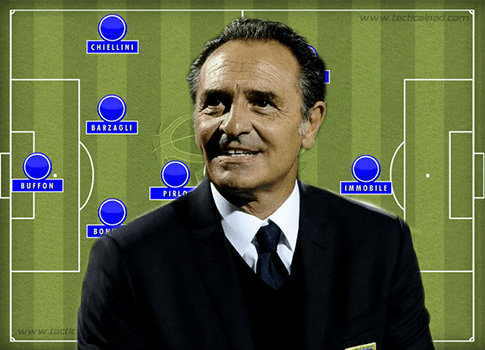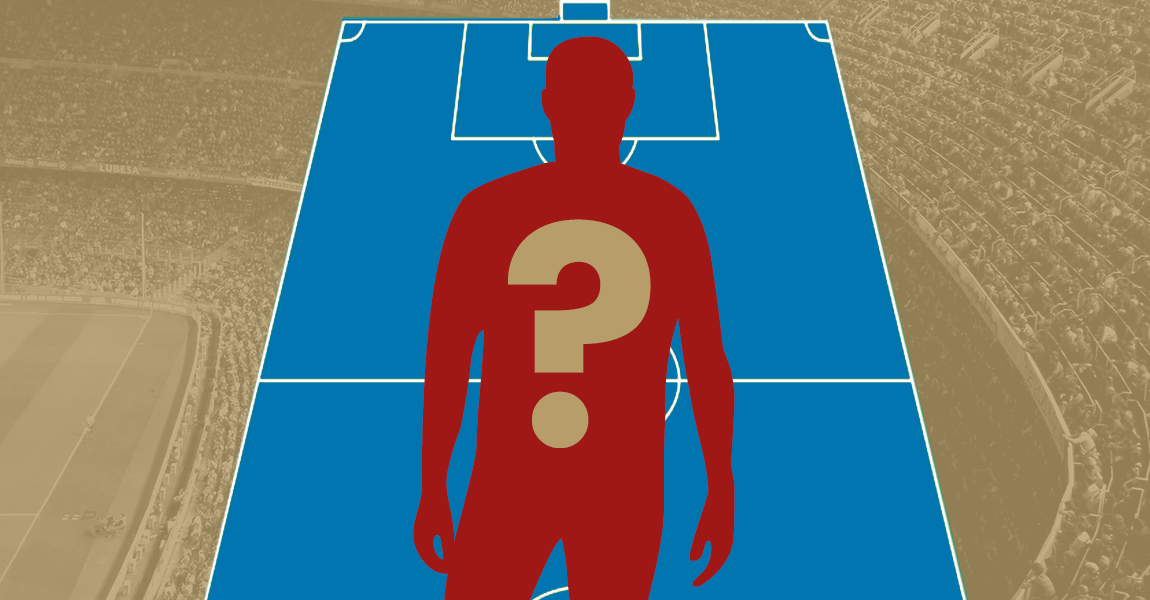Italy travel to Brazil as somewhat of an unknown quantity, a lot has changed over the eight years following the 2006 World Cup in which Fabio Grosso’s penalty awarded a fourth star to the peninsula. Lippi resigned in triumph, however returned in time for the 2010 tournament after Roberto Donadoni failed to meet expectations at Euro 2008. As attention shifted to South Africa, the consensus anticipated a repeat of the success in Germany. Naive, it turned out, as Italy finished bottom in a group featuring Paraguay, Slovakia and New Zealand, failing to record a single victory. Turmoil swept the nation and Lippi left his post in contrasting fashion to how he had done four years earlier, though in doing so paved the way for a new era.
Cesare Prandelli was named as his successor, leaving his position at the Artemio Franchi where he had become the longest serving manager in Fiorentina history. The former Juventus midfielder reversed the direction Italy were headed in, leading the Azzurri to a runners’ up place at the 2012 European Championships, his first tournament in charge. Prandelli’s composure in the hot seat has earned him many a fan, as has his aptitude in the face of adversity, however Italians have his tactical nous to thank for the early success enjoyed on the field.
Italy finished in third place at last year’s Confederations Cup, narrowly suffering defeat – through a penalty shootout – at the semi-final stage to Spain, however the priority was more to experiment than to win. This served as ideal preparation for the forthcoming World Cup with games taking place at a selection of this summer’s host cities and with matches played in near identical conditions the experience acclimatising to the environment presents an advantage, come June and July, unique to most of the competition. Prandelli made full use of this chance to judge which systems would provide the desired results and which would culminate in disaster, with variety in personnel and formation a constant theme throughout.
BASIC FORMATION
The time of qualification has also worked in Prandelli’s favour, having secured a place in the tournament with two group games remaining, and with three friendlies scheduled he was granted extended time to tinker tactically. Italy failed to win in all of these five fixtures, but the refined comprehension of Prandelli’s updated philosophies compensate for this, with variations of the 4-3-3 and 4-3-1-2 improved.
ANALYSIS
I have christened the two ‘Plan A’ and ‘Plan B’, though there is no order as such at the moment. It’s up to 56-year-old to weigh up the pros and cons before the opening group game against England, it’s a high probably that we’ll see the two formations during the upcoming warm-up games with the Republic of Ireland and Luxembourg.
Plan A

Made using Tactical Pad
Perhaps Plan A – the 4-3-3 – offers the most complete package, at least in an attacking sense, with the potential to accommodate Mario Balotelli, Ciro Immobile and Alessio Cerci in the same frontline.
Balotelli enjoyed a better season than Milan’s campaign would indicate, however inconsistency did plague certain phases of it and whilst many would regard the 23-year-old as the standout match winner at Prandelli’s disposal, identifying him as the focal point without momentum hardly seems a recipe for success. In this instance, Mario would operate to the left of Immobile, with the reigning Capocannoniere’s Torino team-mate starting on the right. Immobile has form on his side heading into the World Cup having finished the domestic campaign as Serie A’s top goalscorer, however should ‘Super Mario’ rediscover his touch as the tournament progresses moving him into a central position almost becomes a formality. Cerci will have a chip on his shoulder after his penalty miss denied Torino their dream of European football, though Parma’s suspension has put them through anyway; Antonio Candreva represents a more than capable alternative should Prandelli deep Cerci not good enough.
Thiago Motta and Daniele De Rossi would offer protection for Andrea Pirlo, allowing him to perform freely and fluently in order to service the attack, whilst also dictating the tempo from deep. Pirlo is 35 years of age and heading towards to end of his distinguished career, nevertheless continues to be an integral part of Prandelli’s plans and heading into his final World Cup will have added determination to go out with a bang.
Mattia De Sciglio, Leonardo Bonucci, Andrea Barzagli and Giorgio Chiellini complete a frighteningly formidable back-line to protect skipper Gianluigi Buffon. Juve’s contingent of the back four are more comfortable in a back three, but with Conte’s intention to revert to similar shape to the national team this may well serve as a blessing in disguise. Italian football has been synonymous with the defensive side of the game for decades and whilst other aspects have advanced with time, today’s breed of stalwarts uphold that legacy, though may well be the last era to do so.
Plan B

Made using Tactical Pad
Cesare has fielded numerous formations during his spell as Azzurri boss, but none more than the 4-3-1-2. This is the system which yielded a runners’ up finish at Euro 2012, it’s ability to function is unquestioned, but more importantly – this is the system which the players are most used to, a factor understated by many. Tactical flexibility reaps many rewards for Prandelli, however can lead to confusion for those having to adapt to a new role on a frequent basis. Without fluidity, Italy’s chances of returning home as heroes are reduced dramatically and it’s for this reason why the 4-3-1-2 could receive the most minutes.
In terms of personnel, a few minor adjustments would have to be made on the 4-3-3. As the two wide positions are removed Balotelli drifts inwards, leading the line alongside Giuseppe Rossi. Rossi partnered Balotelli at the Confederations Cup and in recent friendlies to great effect – before the coveted Fiorentina forward suffered his latest knee injury – and, if fitness allows it, Prandelli may opt to use this combination once again. It’s plausible yet that Mattia Destro will board the plane in his place, though one would think that Cesare will make every attempt possible to take the ex-Manchester United attacker.
In these circumstances it’s crucial that Prandelli selects someone he holds faith in to link the midfield to the attack – the role is arguably more important than any other in this formation – and if it were my decision to choose the player to fill that void, Antonio Cassano would take my vote without hesitation. Roberto Donadoni delivered disappointment to Italians in 2008, however has offered a gift six years later with his renaissance work at the Tardini bringing back the Fantantonio of old. Riccardo Montolivo’s lack of conviction in the role raised questions over this system, at the highest level, however with the 31-year-old returning from international wilderness such doubts have been put to bed.
One remaining qualm regards width, or lack of it, ergo it’s imperative that Prandelli deploys two full-backs capable of providing that support: Rossoneri duo Ignazio Abate and Mattia De Sciglio are two examples which spring to mind immediately, though competition isn’t exactly rife in the current squad. Opposed to the restrictions placed on the pair at San Siro, Abate and De Sciglio can maraud forward at will with the security of talent around them so a reliable delivery service to the strikers shouldn’t be too much to ask.
KEY PLAYERS
Thiago Motta | returning to the country of his birth, Motta is perhaps the most underrated of likely starters. Whether it’s owed to his metronomic control of the tempo or pin-point accurate passing, the 31-year-old has garnered much hype among Ligue 1 observers, but has failed to make the same effect on those external to these circles. In front of a substantially wider audience, the Paris-Saint Germain enforcer will undoubtedly change that trend, especially if used alongside De Rossi and Pirlo – watch this space.
TALENT RADAR KEY YOUNG PLAYER
Marco Verratti | at time of writing joining his colleague is nothing certain, down to his incapacity outside of the role occupied by Andrea Pirlo some have suggested, however the Serie A exile is guaranteed to feature in World Cups to come and if Prandelli bears this in mind there’s surely no way he can discount the value of experience, even if he participates predominantly as a spectator. Pirlo’s age must be taken into consideration also, as only Verratti can offer the same type of service, and under physical strains of the Brazilian climate severe fatigue cannot be ruled out of the question. There are a plethora of valid reasons to select the 21-year-old, but much of the thought process when ultimately deciding his fate will come down to how he presents himself, of has presented himself, amid current reservations. Here’s a Scout Report on Verratti.
Mattia De Sciglio | De Sciglio and his versatility mean that he will be a player that fits into the various plans and formations that Prandelli will utilise at the World Cup. So De Sciglio can expect to start most games, due to the kind of defensive stability he provides, and his proficiency in attack. However, De Sciglio faces tough competition for his starting spot, with the likes of Abate and Chiellini providing Prandelli with good options in case the youngster isn’t in form. The trait that sets him apart is his excellent defending. He has been likened to Paolo Maldini for a reason, and in a one-on-one situation, you might get to see just why.
CONCLUSION
Italy are notorious slow starters, however won’t be afforded that luxury up against England and Uruguay for a place in the knockout stage. The Azzurri have quality in abundance, but consequently have the weight of expectation on their shoulders. Although this is nothing new, it’s something that must be tackled head on and used as means of motivation rather than as an excuse to choke. Making it to final four isn’t something that should be written off at this point, but neither is coming home having only played three games. In all likelihood, Prandelli will return from the World Cup in similar fashion to his predecessor – only time will tell whether the reception will be that of the euphoric 2006 or of the sombre 2010.
This article was written by James Bufton. You can follow him on twitter @jamesabufton
Read all our World Cup Tactical Previews here, and all other WC2014 related content here.























































